Your daily dose of Product Management Goodness
Want to know more?
We would love to hear your questions and suggestions for topics you would like to see covered in our future blog posts, so don't be shy and get in touch!


A new product or service
Forecasting for a new product or service is challenging with no historic or foundation data to work from. Challenging, but critical! Scope it right and you’ll align costs with opportunity to deliver a profitable proposition We use a seven step process:
1.Find the total available market – How many could buy or use your service?
2. Understand the stage of lifecycle your market is in – For example, is the market in growth or maturity phase? This will dictate how much of your available market is ready to adopt.
3.Identify key segments to do your research – Do quality research in a core market rather than spreading you research too thin
4.Triangulate your qualitative research – It’s not research if you only talk to one customer!
5.Underpin with quantitative research – Use surveys to check the opinions expressed in qualitative research are supported in larger numbers
6. Use ratio modelling to build a global view – if you’ve sized the US market, then use stats around population size, GDP, or more focused market factors to estimate adjacent markets
7.Build an estimate – Use error bars to give an forecast range.
One of the harder aspects of product management, but a very valuable skill.
read more
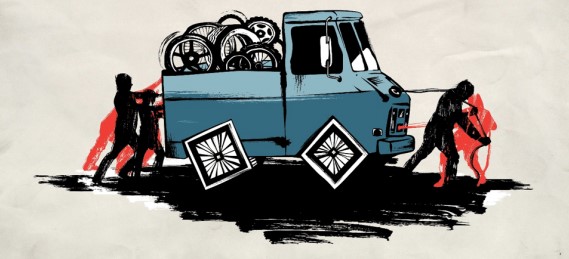
good development, bad product
A good development process doesn’t make a good product
Many teams seem to turn to agile models in the hope that it will fix product problems. And although agile processes are great, they don’t generate great products in isolation.
Two points:
1. A bad idea stays a bad idea no matter how well it’s developed - it’s just a well executed bad idea.
2. Product is more than technology - think naming, pricing, positioning,
etc. Agile gives you only a small part of what you need for product success.
The product management lesson? Agile won’t fix your world. It might make one small part a bit more predictable.
read more

Finding the innovator
Driver-less cars. Love them or hate them, it feels like we are moving towards a future where automation will at the very least reduce driver engagement. But how will this market grow and form? It’s easy to get caught in the hype at the consumer end of the driver-less revolution and envisage the everyday commuter ‘driving’ to work eating breakfast, shaving, reading email. But as product managers we know that most markets form around innovators with big problems to solve.
Q: Who has the biggest problem that driver-less technology can solve?
A: Logistics companies spending a huge amount on drivers.
But what does that mean?
The driver-less market will hit the freight sector first and us commuters might have to wait longer than expected before jumping in the passenger seat. The product manager lesson: an innovator nearly always has more pain around the problem you solve.
read more
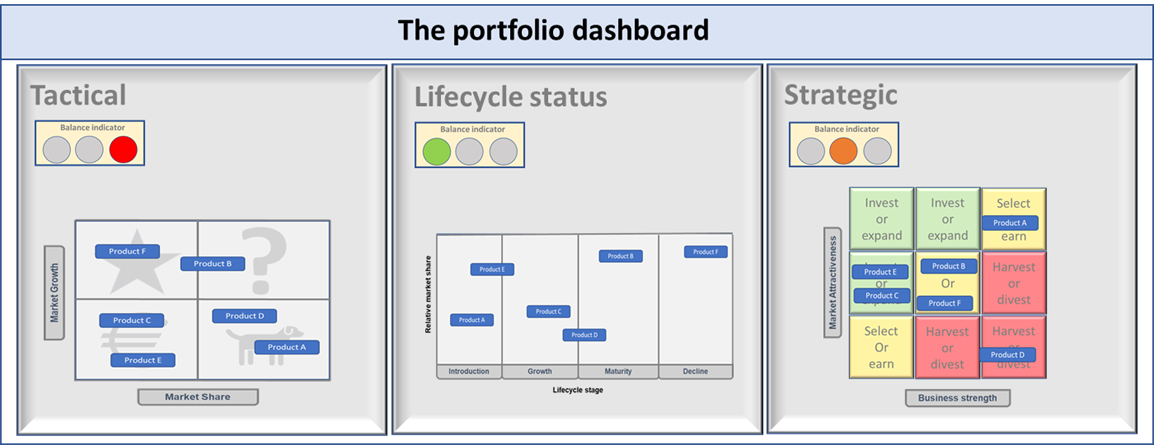
Product Portfolio
Managing a product portfolio
How do Product Managers make the right investment decisions so that the portfolio is performing well today and will continue to perform well in the future?
We use a dashboard so that Product Managers can make sure the tactical balance is correct (The BCG matrix), the Lifecycle mix is right (ideally we don’t want a portfolio all at the same stage of Lifecycle) , and the fit to longer term strategy is correct (the GE tool)
This gives a balanced view of portfolio.
read more
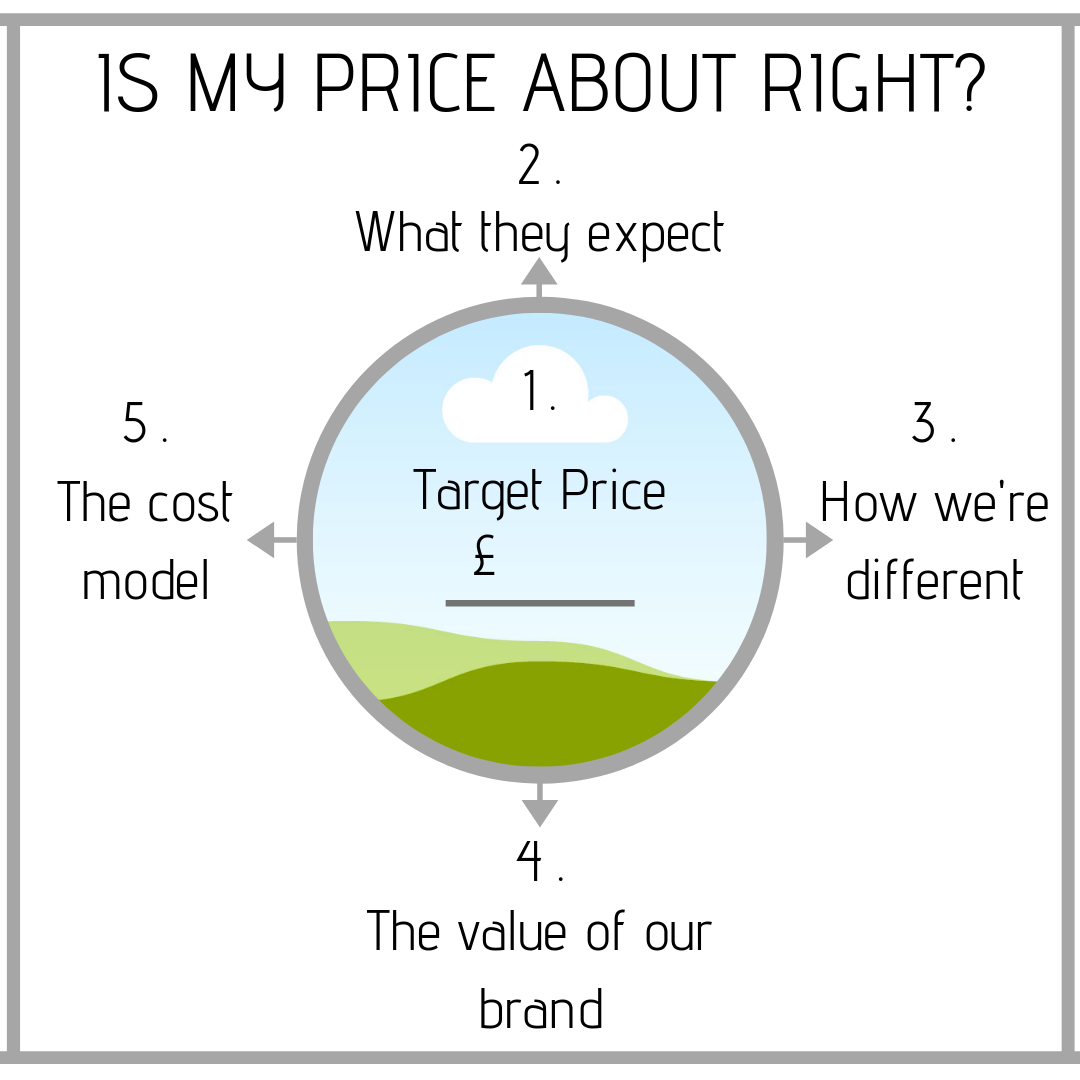
Is your price right?
We know that setting a price for a new product in a new market is based upon perceived or actual value, but what about price points when you’re taking upgrades into existing markets?
Here’s a five step process to check if your price point makes sense:
Product Name:
1. Target - Write down the target price point
2. Expectation - How does the target price point compare with pricing over the last three years in the market?
3. Difference – What does your product or service offer as a point of difference? Are these differences tangible and valuable to your target market?
4. Brand – How does your brand impact perceived value? Don’t dismiss the power of the brand!
5. Costs – Does the price point deliver against financial goals
Evidence : Describe where you gathered your evidence
read more

Who is your customer?
As product managers, we often think of our customer as the person or business that uses our product – the end user. But it’s often more complex than that. Reaching that end user often means working with other teams – sales, support, third party re sellers, etc. The point is this; If those intermediary teams do not see the value in your product, you’ll never get to the end user. It’s best considered as a value chain – you’re at one end, the end user is at the other. The chain is only as strong as its weakest link. If the sales team don’t understand it or the third party re seller wont stock it then the end user won’t even see your product.
So who is your customer? Every one in the value chain. Try and address their needs and motivations, and the chain will be strong.
read more
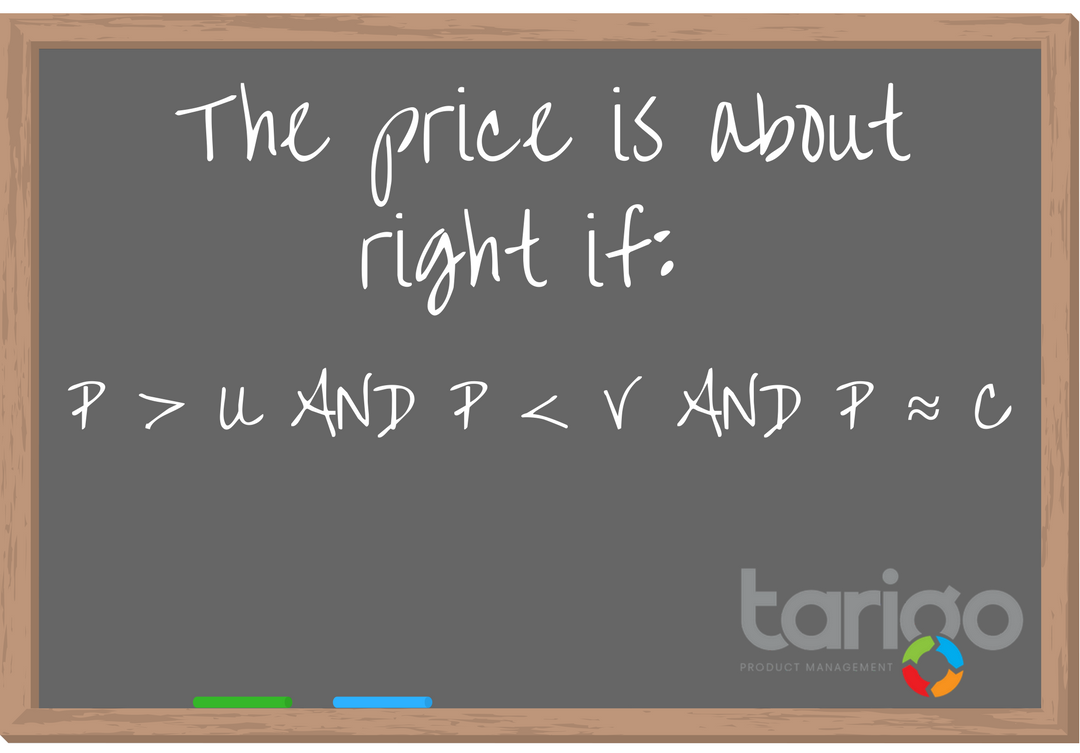
Pricing - in the right ball park
Want to quickly check if your pricing is in the right ball park? Then answer three questions:
1. Is the price higher than the unit cost – we don’t want to lose money every time we sell
2. Is the price lower that the (perceived or tangible) delivered customer value – customers won’t buy if your product doesn’t represent fair value
3. Is the price broadly equivalent to comparable offers in the market – if price expectations are already set, customers will be unwilling to move far from that price
For the mathematically inclined, this turns into a simple model for sanity checking a price point.
P = Selling price
U = Unit cost
V = Customer value
C = Comparable solution price
read more

Getting the message right
When should product managers engage with marketing to get the message right?
All too often, product marketing is an afterthought; we see many cases where teams don’t engage with marketing until late in a delivery cycle. And then they’re disappointed when the collateral, the positioning, the imagery and the core message don’t hit the mark.
My advice? Engage early. Really early. Get the marketing team involved at the ideation stage – at the very least they can help identify USPs, more likely they’ll add real value to the discussion and ultimately help drive a better product to market. Remember, Product Management is a team sport.
read more

Getting a product wrong
The impact of getting a product wrong
You can get a product wrong in many ways - badly designed, poorly build, doesn’t solve any specific need, too expensive etc....
We often think of the cost of the mistake in relation to the product - x million in development effort has been wasted, but the cost is much bigger than that. Think of it from a brand perspective. If a company delivers a bad product then customers don’t just reject the product, but they become wary of brand. An example from two brands- Alfa Romeo and Porsche; Alfa have a history of highs and lows. Sometimes they delight, sometimes not. Porsche have consistency. Now imagine both companies announce a new sports car for 2019 that you can place a deposit on today. Guess who would have the fuller order book? Brand confidence is a war that products battle to win.
read more

Marginal Gain
Marginal gain can lead to market dominance
The product managers I meet are an ambitious bunch, often looking for ways to drive huge growth and dominate their market. My response sometimes surprises them “Huge product success often lies in the tiny detail”. Let me explain. In many markets the difference between product offers is pretty small. Winning in these markets can often be about tiny detail – a slightly better interface, a small feature, a better sales pitch or even a quicker response to a customer email. The point is that in competitive markets the detail counts. Rather than thinking about wholesale reinvention, many product managers should think of marginal gain – small scale improvements that in isolation mean nothing, but in aggregate can help you win. Market dominance can be achieved by being slightly better than your competitor most of the time. So what could you do today to slightly improve your product offer?
read more
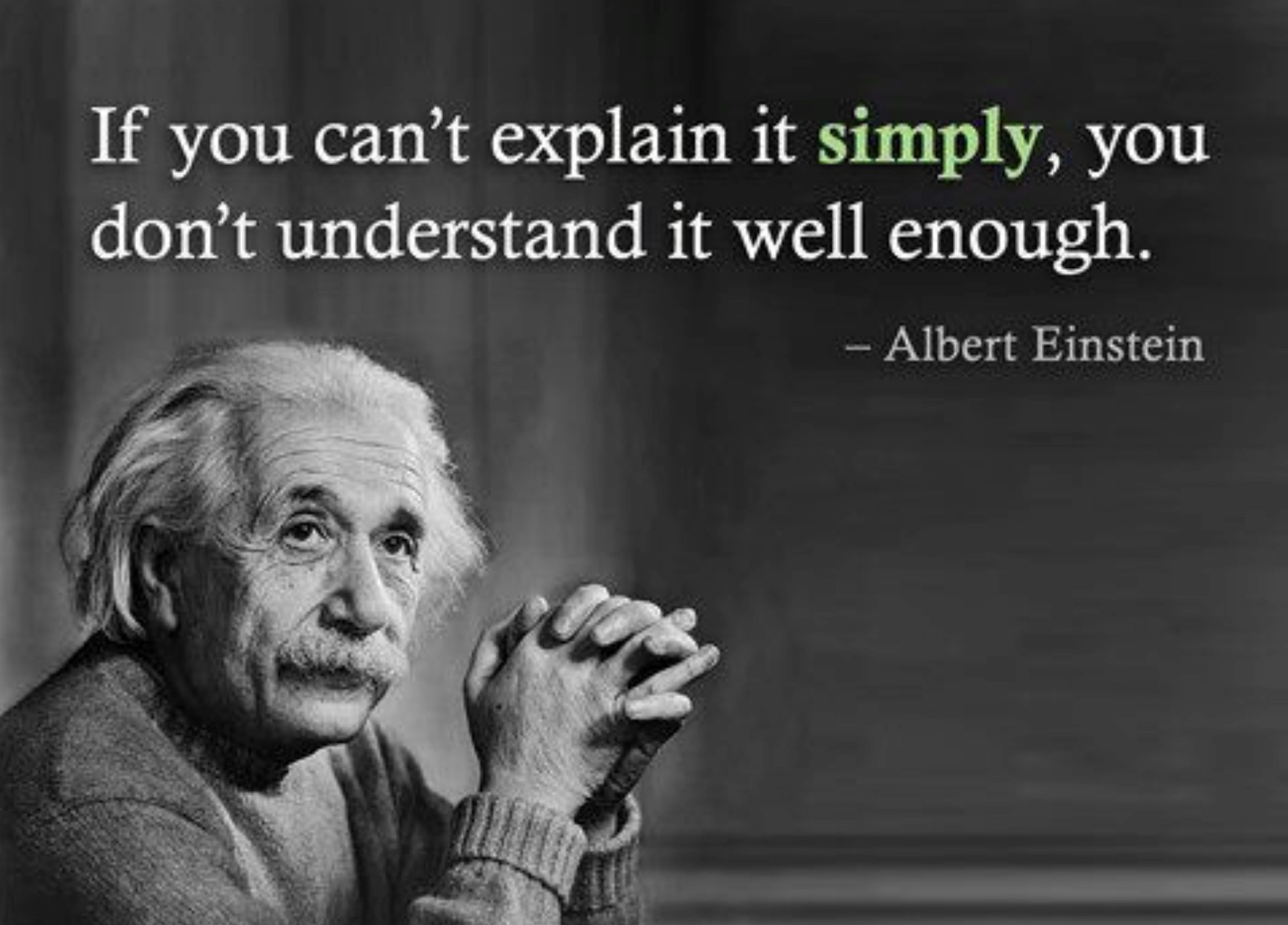
Simplicity is Key
I’m going to get this printed on a t-shirt and give it to the next product manager who starts by telling me their product is complex to explain! Part of the art of great product management is making the complex as simple to understand as possible. Want to test you or your team on simplicity? Then try this; describe your new product offer/feature in 30 seconds or less to a group who are in your market. Wait 10 minutes and the ask them to describe your product offer. Did they remember it? If not, that’s your problem, not theirs.
read more
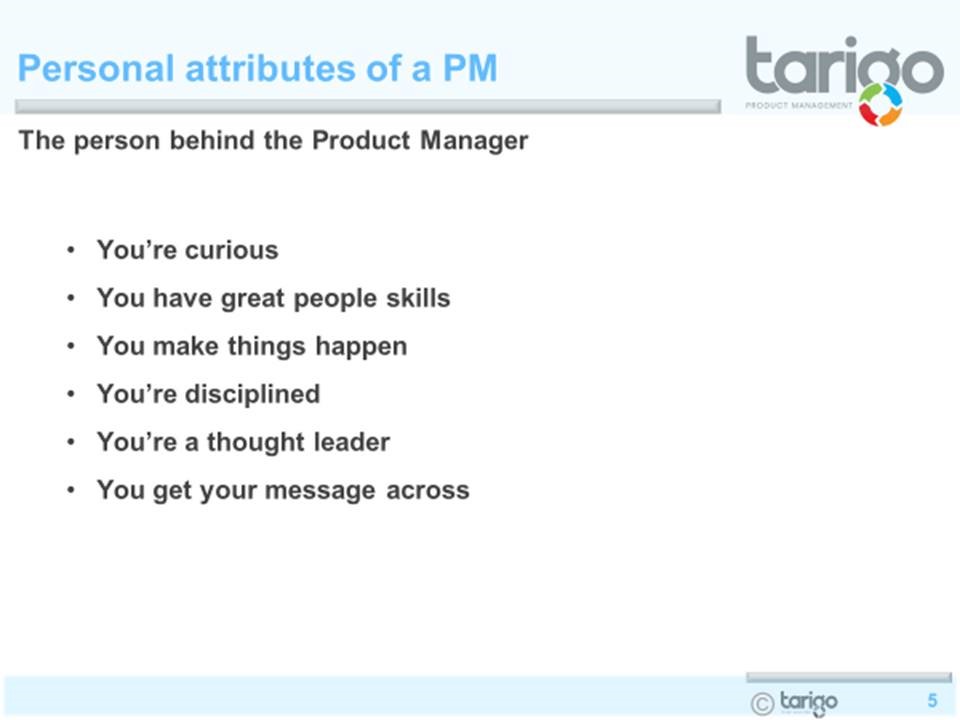
What to look for - Prod Manager
What to look for in a Product Manager
I was asked recently to define the qualities or attributes of my best Product Manager hires. This is my list, what is yours?
• You’re curious – You have a natural born curiosity and are eager to learn and understand. You always ask ‘Why?’.
• You have great people skills – You can influence and inspire through your passion, drive and credibility. People want to work with you.
• You make things happen – You’re a doer as well as a thinker. You solve problems. ‘Proactive’ defines you because you want to a difference
• You’re disciplined – You are structured in your approach and utilise processes and tools effectively to get the job done consistently.
• You’re a thought leader - You are able to distil complex information down into an insightful and compelling narrative. You use insight and evidence to make recommendations.
• You get your message across – You are clear, concise and credible in your communication, being able to deliver a message in a few words with complete clarity
read more
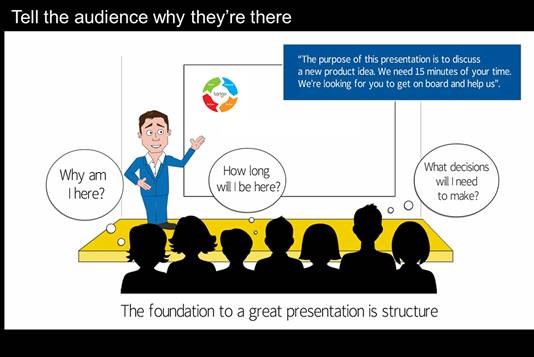
Presentation Skills
Yesterday I delivered a webinar on communicating with clarity.
For a product manager, being able to present with clarity and conviction is a skill worth working on. Your bright new product idea could fall at the first hurdle if the review team simply don’t understand it or pay enough attention because of how you present. Sometimes a presentation unravels from slide one as they fail to get the introduction right.
So how should your presentation start? The key is structure; your audience want to know some basics. “Why am I here?”, “How long will I be here?”, “What decisions will I need to make?” So tell them! Whoever the audience, take the lead from word one, slide one. You give the audience confidence that you’re in control.
read more
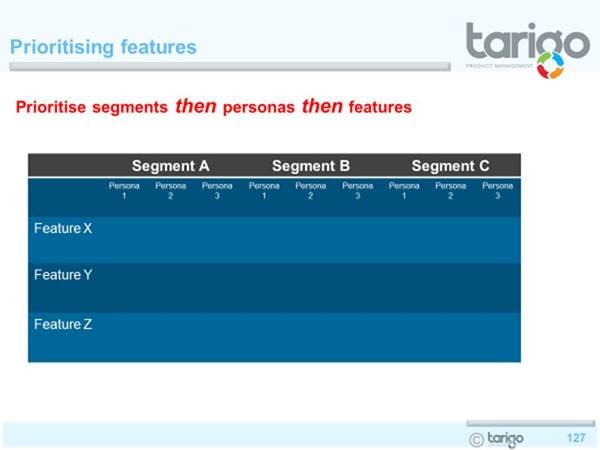
How do you prioritise features?
A common issue for Product Managers – they have a list of features and they need to make the call about which gets built first. The issue being that each feature is important to some customers.
Here’s a simple tool to help. Don’t start with the feature, start at the market end – prioritise your segments from most to least important (this could be based on value, growth , access, profits, etc). Then prioritise the people in those markets (for example, who controls the budget, or acts as the technical gatekeeper). Only when you’ve done this do you think about the features - what does you most important persona in your most important market value from the feature list?
read more

A Product plan
A Product plan is the nucleus of your product! It takes a lot of work to complete but it helps to align cross-functional teams and provides all the information available about your product, from hard market research to detailed financial models.
It’s time to present your product plan in order to bring teams in-line with your product. And all that hard work could be for nothing if you get this wrong and fail to communicate your message clearly. You have to be sure that the review team are going to understand, the product, the vision and all the key ancillaries that surround your product.
This requires a presentation that has clarity and conviction, a critical skill that all Product Managers should master. Communicating with clarity, during presentations or any cross-team activity is key to building the right foundations and setting your product on the right course!
Learn more about Communicating with Clarity in our Webinar session tomorrow, sign up here: https://zoom.us/webinar/register/WN_XVIik3g6R-SSUTEFN2InqA
read more

Agile Updates and Delivery
Agile delivery of product requirements and updates allows teams to maintain momentum and focus. Each sprint cycle within the agile world gives you a package update that is customer ready every 30 days, great!
But just because we work agile within the company setting doesn’t mean our customers want these updates delivered at the same rate.
We have to think about our customer base and the types of customers we deliver our product to, if we have customers working in a highly regulated sector then we have to be very considerate as to the frequency of updates to products and solutions that those customers use. Whereas public consumers are less likely to be upset or irritated if they receive updates more regularly.
Even with that in mind, we don’t have software updates for our smart phones every month, that would become tedious to most! Instead updates are delivered when there is a substantial package ready for consumer use!
Remember just because you can deliver an update every 30 days doesn’t mean that your customer types want to receive those updates at such frequency!
read more
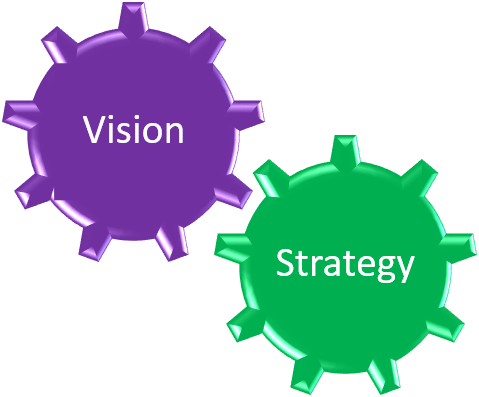
Strategic Thinking
Don’t fall into the trap of spending all your time in back to back meetings. Product Managers need time to think of future trends in their markets, new regulation, changes in customer behaviour etc. They must develop a clear vision of where they want to take their product based on trends and market changes. If not the product becomes directionless. If we spend all our time making tactical changes that in aggregate mean nothing, eventually our product will become irrelevant. Think about what happened with HMV and blockbuster.
My advice? Diarise strategic thinking - 30 minutes during the week where you ask yourself “What are the trends and changes happening in my markets that could impact my product” Don't wait for the trend to hit - it’s too late then.
read more

Improving the user experience
A hotel I was in had tea and coffee making facilities in the room. But I couldn't get water in the kettle due to the shape of the sink. Not a great user experience! This type of niggle is common - many products and services have their equivalent of the hotel kettle - a feature that’s been included with good intent but not thought through in terms of customer interaction.
How do we fix this?
Product Managers should utilise user journeys, stepping through the customer experience to see how the feature works. It’s the difference between saying "We've put a kettle in the hotel room, job done" and "A guest arrives in the room for the first time and tries to make a drink. Let's step though that process".
read more

Thinking of product retirement
Many Product Managers spend very little time at the retirement end of the Product Management discipline. Consequently, it’s an area where many teams have limited process or procedure. But remember, a bad product withdrawal can impact future product introductions – would you buy a new product from a company that had let you down with a previous product retirement? As with many things PM, the key is to step back and think a little. If you have a product that you’re thinking of withdrawing or replacing or retiring, spend 15 minutes answering these six questions before diving into a retirement plan.
read more
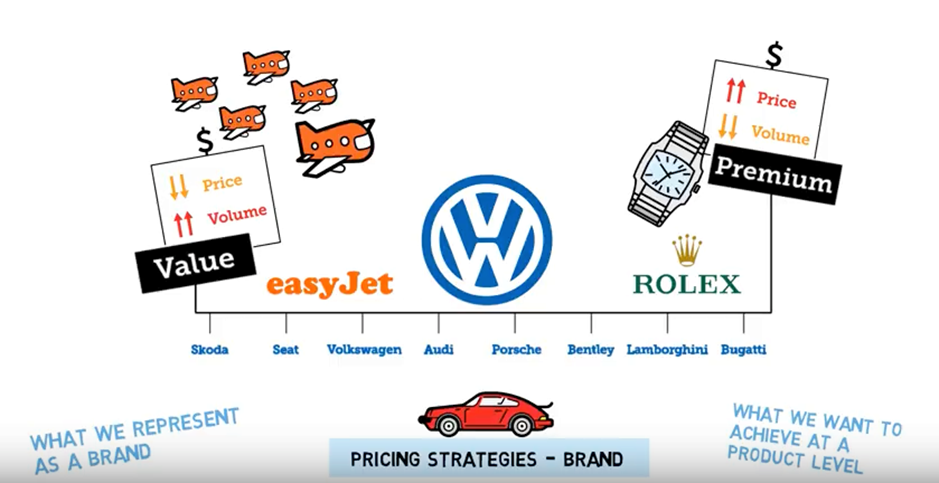
Brand and Price
How do you price a product? There are many aspects to think about (the value it delivers, the competitive landscape, etc), but many Product Managers underestimate the impact of brand. Your brand sets parameters on the price points you can achieve (and therefore the products you can deliver). “Easyjet launches super premium business class service” is not a headline we’re likely to see – the product might make sense but not in the context of the Easyjet brand. And don’t think of this as exclusive to B2C products. Earlier in my career I managed a product that was white labelled and resold by Cisco. The Cisco team could achieve higher price points in the market because they were a known, trusted brand with relationships, history etc. A great example of how to do it can be seen in the VW/Audi group, who take a range of products to market from low cost to super high-end using the power of brand to distinguish their offers.
read more
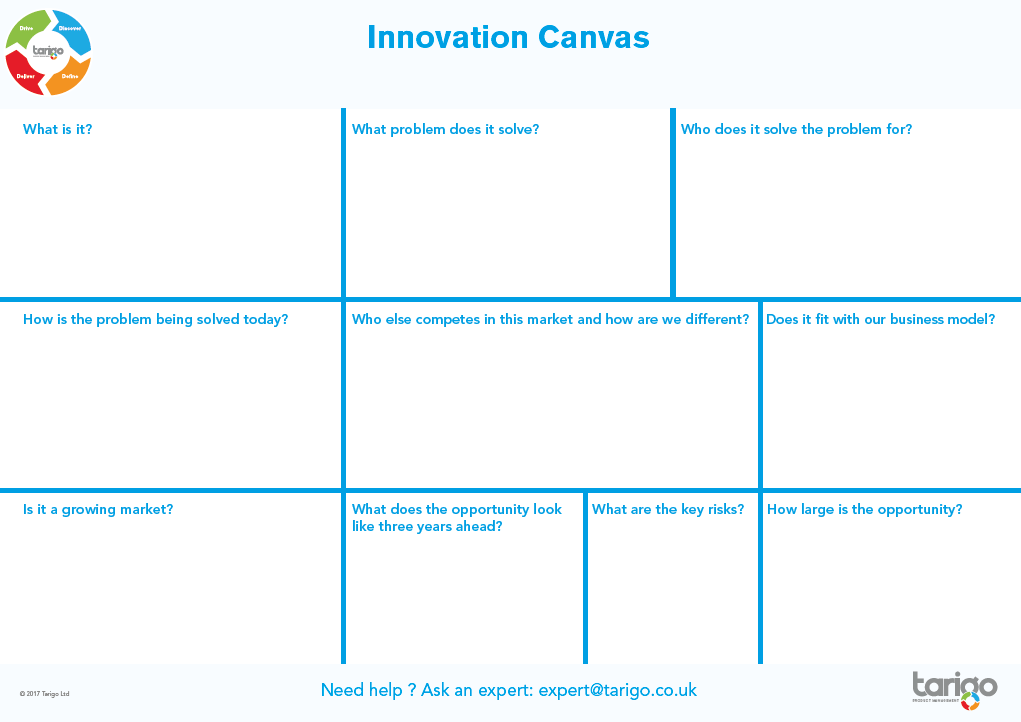
How do you deal with new ideas?
“We have loads of news ideas!” Sounds like a great place to be, but for many Product Managers the stress of managing those ideas is formidable – ideas from sales teams “I can sell 100% more if you add these features” to managers “We need this new product to dominate market X”, to technical teams “We can build AI capability to enhance our product”, etc….
When the next person walks up to your desk with another great idea, whip out the innovation canvas. Fifteen minutes of effort, ten questions long, helps you understand what’s worth taking further and what should be dropped.
read more
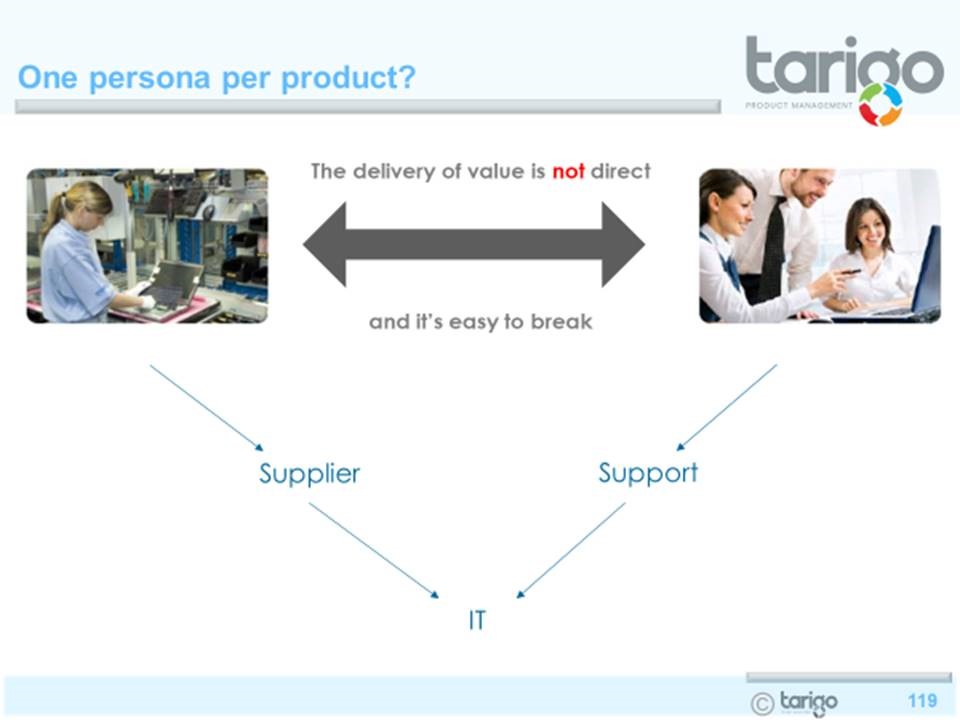
The most common persona mistake?
The last few years has seen an increasing use of Personas and User Journeys across Product Management teams. They give us great insight and help us define products that truly meet customer needs. However, I see a common mistake; personas are so often focused solely on the end user. End users are important but they’re not the whole story – those end users won’t get to use your product if it does not make sense to the full value chain. Take a new credit card as an example; Banks would need to offer it and Merchants would need to accept it before consumers could access the value. The value chain will break at its weakest point of value.
read more
Check out the Archive